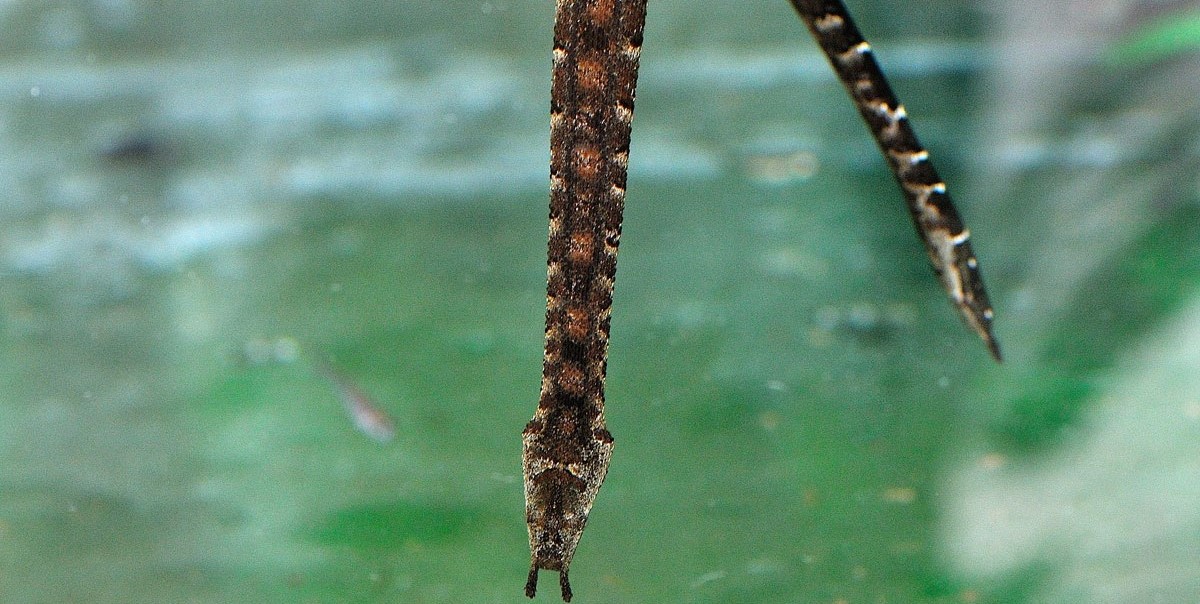Tentacled snake
Erpeton tentaculatum
Order: Squamata
Family: Colubridae
Genus: Erpeton
The tentacled snake belongs to the Colubrid subfamily: Homalopsinae, a group of rear fanged aquatic and semi-aquatic snakes, which range over much of southeastern Asia, Indo-China, New Guinea and northern Australia. It is completely aquatic and is virtually helpless on land. It is a relatively small snake, with an average size of only 50 to 75 cm. The head is small but distinct from the neck. The eyes are small and round. There are two short tentacles protruding from the snout of a length of 13 to 19 mm. The body has markedly keeled scales and they vary in colour from dark brown to tan or pale gray. The darker specimens have a pattern of tan/yellow ventral stripes, the lighter ones have a dorsal and lateral pattern of brown, reddish brown or black bars.
Conservation Status: IUCN
Distribution
Coastal southeast Asia, including Vietnam, Thailand and Cambodia.
Habitat
They spend their entire lives in the murky water of lakes, rice paddies, ditches, sloughs, and slow moving streams. The water can be fresh or brackish. It can also be quite silty. During the dry season it will, if necessary, bury itself under mud until the rainy season restores the environment.
Diet
They feed exclusively on small fish. Their venom is specific to the fish they eat.
Reproduction
Tentacled snakes bear live young with up to 10 young in a litter. They are born live underwater.
Adaptation
They are mildly venomous with small, partially grooved fangs positioned deep in the rear of the mouth. They have a unique ambush method of hunting. They remain in a rigid posture under water with the tail anchored around a submerged object such as a plant, branch or tree root. They lie motionless with the body curled into a distinctive “J” shape, and wait for fish to swim past. When a fish nears, the snake “ripples” muscles in its neck area. This movement elicits a reflex flee response in the fish, scaring it towards the snake’s mouth, where it is easily caught. Their colour and pattern provide camouflage while lying in ambush. Adaptations to their aquatic environment include nostrils that can be closed by specialized tissue and an extendable glottis that can be inserted into the internal nares. They can remain submerged for up to 30 minutes without coming up for air. If molested, they become completely rigid and remain that way for several minutes, even when lifted out of the water. They are strong swimmers and will thrash vigorously to escape danger. It is the only species of snake to have twin “tentacles” on the front of its head. The purpose of these is theorized to be prey detectors, decoys or lures to attract unsuspecting fish that swim nearby. Their probable use is sensory.
Threats to Survival
Tentacled snakes appear from time to time in the pet trade. In some regions they are erroneously regarded as dangerously venomous.















